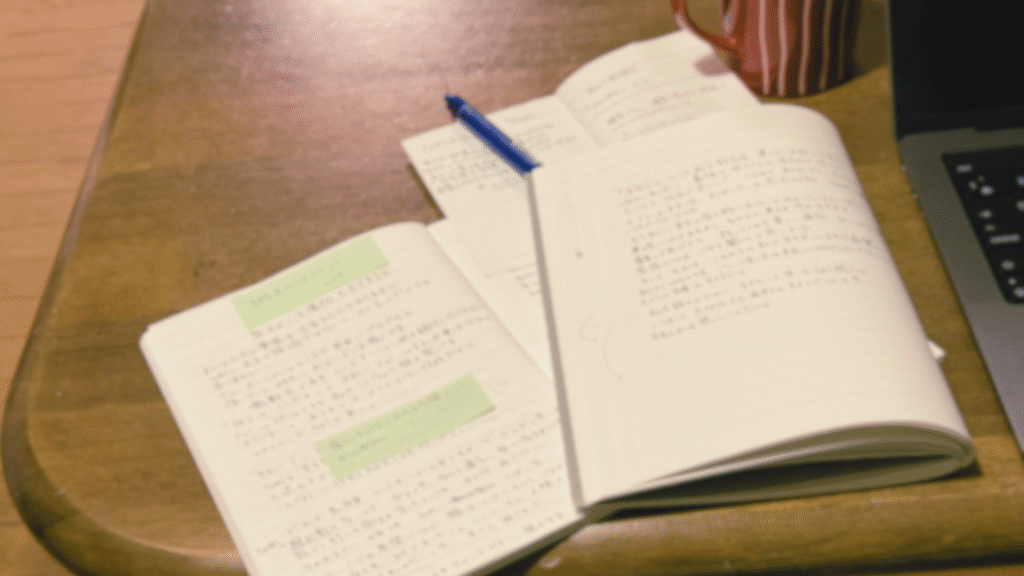2025年は仕込みの年、と決めていました。作編曲、文筆など。
昨年いろいろ考えていたことを、表に出せたらと思ってます。
私の音楽のコンセプトは「ほのぼの」
なぜ、それをテーマにしたのかのお話です。
それと予告編として、「クラシック音楽をピアノソロに編曲」という試みをはじめたのでちょっとだけお話しします。どうぞ最後までお付き合いください。
なぜ、ほのぼの?
コンセプト
コンセプトは、「ほのぼの」〜ほっとする音楽で心と体をリラックス〜
ほっと一息ついたときに、ゆるんだ心と体がいい考えを生んだり、思い出を振り返ったり。
なんでもないことに幸せを感じたり。
そして、時間も大切。犬をなでている時。美味しいご飯を作ったり食べたりしている時。
ふつうの暮らしだけど、ああ、これが幸せなのかもしれないと思うような瞬間。
あくせくせず、ゆっくりと過ごす。日常の中にある小さな喜びや気づき。
特別なことはしていなくても、自分にとってそれが大事です。
そんな日々を思いながら音楽を作っています。
どんな音楽?
オーケストラのイメージ
みんなが好きな楽器を持ち寄って演奏するオーケストラのイメージです。
打楽器にはちょっとヘタくそな子もいたりするけれど、ピアニストがひっぱっていく。
そんなアンサンブルはとても楽しくて、嫌なことがあっても忘れられるし、明日もがんばろうと思える。
ホールでなくても、お客さんがいなくても、原っぱで気の合う人と演奏できたらそれが喜びです。
ピアノソロ
自然から受けるインスピレーション。
難しく考えずに、親しみやすいメロディーやハーモニー。
なんかだよくわからないけど、いいなっと思うような音楽。
暮らしの中で
毎日のごはんで元気をもらい、
時々旅をして、新しい空気に触れる。
そんな楽しい時間を過ごしながら作った音楽は、誰かに触れたときにも、同じ気持ちを届けてくれるんじゃないかなと思っています。
音楽を届けたい
大好きなことをしているときに聴く音楽。
たくさんの人に届けたい。
リラックスした時間に、そっと寄り添うような音楽であれたらうれしいです。
険しかった道のり
書いてみたら幸せいっぱいの「ほのぼの暮らし」ですね。
しかし私自身、何もしないでそのような音楽観を持ったわけではありません。
ここまで来るには、それなりの努力をしてきました。
やっとのことで、人並みにできるようになり、人の話が理解できるようになって、はじめて音楽と暮らしがつながるようになりました。
成功や名誉といった大きなものではなく、音楽の楽しみは小さな喜びや瞬間。
いろんなことを求めなくても、十分だということ。
それには心の余裕と時間必要だとわかりました。
だから今は、ほっとする音楽を作って、
多くの人に喜んでもらえたら最高だなと、今に至りました。
予告編/クラシック曲をピアノソロに編曲
ここで次回のブログの予告をします。というか、まだ途中で公開できないというのが正直なところです。
皆さんはオーケストラの曲は好きですか?
今、オーケストラの作品をピアノ用に編曲しています。
どの音を残し、どんな響きを活かすのか。(前回の夏の終わりのハーモニーでもお話ししました)
私の方法
スコアなしで弾くときは、まずは音を聴いて、いいなと思う音をざっくりと弾いていきます。細かい部分は適当でも、大まかな音を決めてまずは雰囲気を作るやり方です。
何度も聞くうちに、全部の音が必要な気がするけど、ちょっと我慢して欲張らずに音数を半分にしていきます。
さらに、骨格だけが残るように音を少なくしていきます。この時に、和声を知っていれば、大切な音がわかります。
隙間や空間をどう弾くのか
しかしこのシンプルさに耐えられず、ついつい大袈裟に表現したり、強弱をつけすぎたりしてしまうことがあるんです。
そういう人の演奏をじっと聞いてみると、あぁ、しっかりと叩きまれたピアノ人生を送った人だなとか、反面教師にしようとか。
重たい荷物をおろし、身軽になった姿で演奏をしてるのかな。などいろいろなことが見えてきて面白いです。
もし何かの現場で、私がオーディンションの面接官を担当するなら、ブルクミュラーかバイエル、ギロックなど初級の曲をを弾いてもらいます。
逆に恐ろしいかも・・・
以上、予告でした。
次回までお楽しみに!
課題曲はモーツァルトの ディヴェルティメント 変ロ長調 K.334
「メヌエット」
他のよりテンポが遅めのカラヤンの指揮がしっくりきます。
原曲はDですが、こちらはCで弾きました。
最近の活動
どこかのブログで、本を書いているというお話をしました。
原始的なやり方で取り組んでおります。
自分ではやりたいことがはっきりしていると思ってたけど、
いざまとめようとすると、あれ?つじつまが合わない・・・
がんばります。

感想、ご意見、質問などはこちらです。

English Version/ Why “Honobono”?
The Concept
The idea behind “Honobono” is simple: to create music that soothes and relaxes the mind and body.
It’s about the quiet moments when you can breathe deeply, reflect on memories, and feel grateful for the smallest, most ordinary things.
Time itself is precious: petting a dog, making a delicious meal, or simply enjoying the moment.
These simple, daily experiences often make me realize, “Ah, this is happiness.”
There’s no rush – just a gentle flow and small joys that remind me what really matters.
This is the spirit I try to capture in my music.
What Kind of Music?
An Orchestra of Friendly Sounds
I imagine an orchestra where everyone brings their favorite instruments to play together.
Maybe the percussion is a bit clumsy, but the pianist keeps everyone together.
It’s such a fun ensemble that even bad days can be forgotten, and you find the strength to keep going tomorrow.
It doesn’t matter if there’s no grand hall or audience – playing music with like-minded people, even on an open field, is a joy in itself.
Piano Solo
I draw inspiration from nature, focusing on simple, familiar melodies and harmonies.
Music that doesn’t have to be “understood” – just something that feels good to hear.
Music in Everyday Life
Everyday meals give me energy, and occasional travels refresh my spirit.
I believe that music created from these enjoyable moments can touch others in the same way.
I want my music to be there – quietly accompanying the things you love, and bringing calm to your day.
A Difficult Journey
Reading this, it might sound like I’m living an effortlessly peaceful “Honobono” life!
But it didn’t come easily.
I’ve worked hard to get to this point – learning to listen, to understand people, and finally to connect my music with daily life.
The real joy of music isn’t about fame or big achievements.
It’s about small joys and fleeting moments.
I’ve learned to let go of wanting “more,” and to find enough in what I already have.
This takes time and space in your heart, but now I’m finally in a place to create this “Honobono” music and share it with others.
Preview: Arranging Classical Pieces for Piano Solo
Before I finish, let me share a little teaser for my next blog. Actually, I’m still working on it, so I can’t show it all just yet!
Do you like orchestral music?
I’m currently arranging orchestral works for piano solo.
I think carefully about which notes to keep, and how to bring out their unique colors.
(This is something I talked about in my previous blog on summer harmonies:
https://erika-asai.com/natsu-no-owari-n…arrangement-tips/)
My Approach
When I arrange without a score, I start by listening and roughly playing the notes I like.
Even if the details are messy, I try to create the atmosphere first.
Then, as I keep listening, I realize I don’t need every note – I start cutting them back, aiming to leave only the essential skeleton.
How to Play the Spaces
It’s hard not to overdo it – I often find myself adding too much expression, too many dynamics.
When I hear someone else playing this way, I think:
“Ah, they’ve spent years at the piano, but now they’re finally playing with a lighter touch – they’re carrying less weight.”
It’s fascinating to watch.
If I were auditioning pianists, I’d probably ask them to play beginner pieces like Burgmüller, Beyer, or Gillock – the simplest pieces often reveal the most!
That’s the preview for now – stay tuned!
The piece I’m working on is Mozart’s Divertimento in B-flat major, K.334, “Menuet.”
I’m playing it in C, a slower tempo that fits Karajan’s conducting style nicely.
For any questions, comments, or feedback, feel free to reach out:
https://erika-asai.com/contact/
Recent Projects
I mentioned somewhere else that I’m working on a book.
It’s a very basic, “primitive” approach – handwritten notes and lots of editing.
I thought I knew exactly what I wanted to say, but once I started writing, the pieces didn’t fit together so easily.
Still, I’m doing my best to put it all together!
If you have any thoughts or questions, let me know:
https://erika-asai.com/contact/
Translation by AI.



コメント